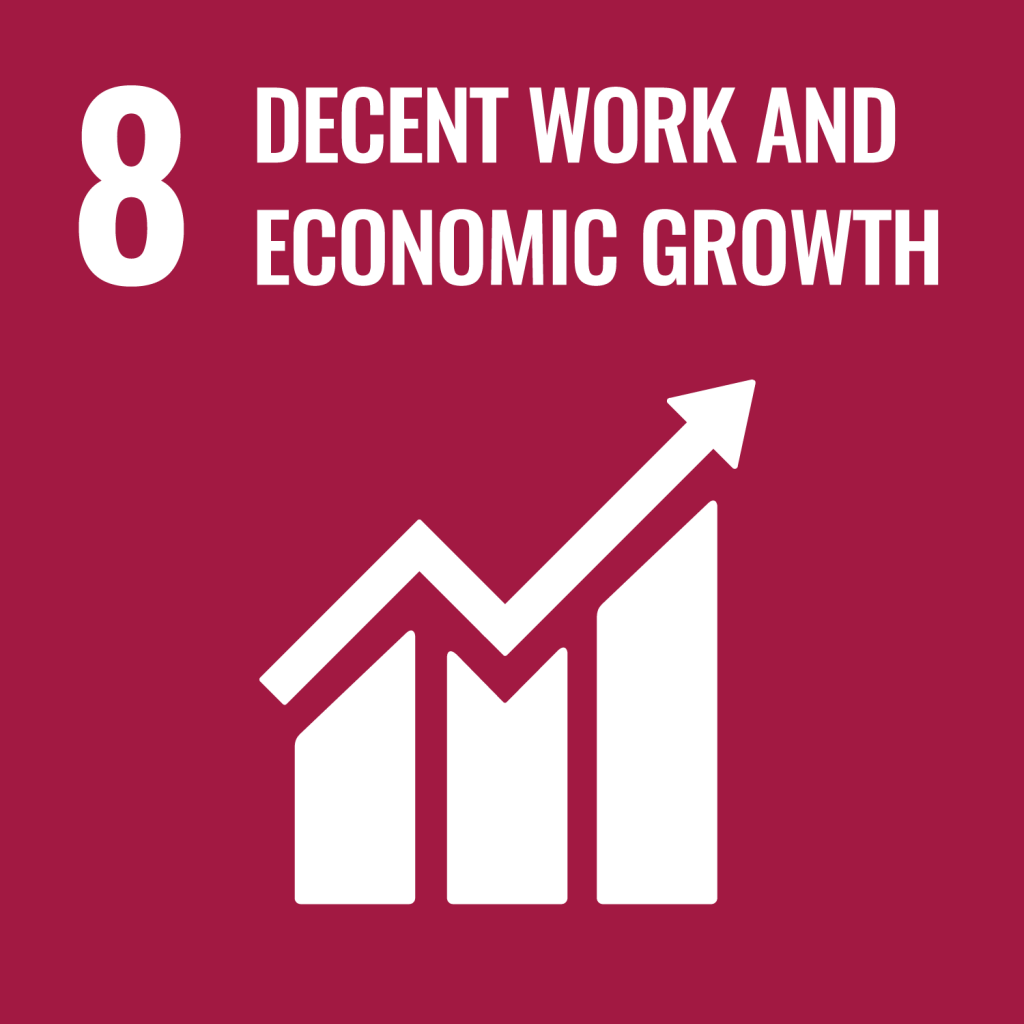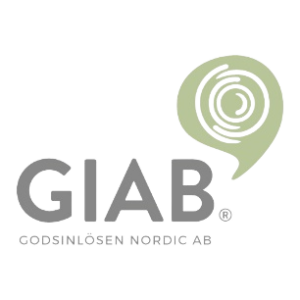GIAB Godsinlösen Nordic AB
Medium, 87 employees
Retail
Retail
Lesson
This is a case study of a successful circular economy business model that captures new value (jobs, profit) through the reduction of destroyed value (e.g. ineffective return handling leading to new products been thrown away) by offering logistics solutions and prolonging product lives through reparation. Practical experiences about how to get circular are shared externally through the company ́s own consulting business area.
Background
GIAB is a public limited company active in and driving the development of the circular economy. Within three of their business areas GIAB offers logistics services for return handling, large-scale repair service of mainly electronics and furniture as well as new distribution channels for repaired goods. In their business area Re:commerce, GIAB offers sustainable handling of reclamations and returns for the quickly growing e-commerce industry that has not developed efficient ways of handling returns leading to a lot of value being destroyed.
Returns are handled at GIAB, damaged products repaired inhouse an all goods resold through GIAB ́s sales channel “Returhuset” (Returnhouse) which are physical stores as well as a web shop for repaired and returned products. The profits are shared among GIAB and the e-commerce customers. GIAB ́s service for the insurance industry is part of the business area Circular Insurance and entails a circular indemnification process, for which GIAB collects damaged products from insured private persons, repairs the damage and sends them back. Since only 30% of the claimed products are handed in by the policy holders, the insurance companies, that previously automatically paid for damaged products, save a lot of money which is shared with GIAB. In the business area is Circular Office, GIAB concept is to offer and resell complete office equipment consisting of reused electronics and reused furniture to organizations.
An in-house developed software called GIAB Circular Platform allows for the traceability and data collection of a product ́s logistical journey including different materials inside a product and which parts of the product have been repaired or renewed. Using the product data GIAB produces detailed sustainability reporting for their customers (including the amount of saved CO2, water, critical minerals and metals resulting from the prolonged product lives). With GIAB Consulting, their fourth business area, the company is shaping the circular economy with their practical and technical expertise (i.e. Circular Platform), GIAB ́s contributes to the development of a EU product pass.
GIAB ́s sustainability practices contribute to the UN Sustainable Development Goals:



Sustainability Story
When GIAB has been found in 2009, circular economy and environmental sustainability were not the core drivers. The founder designed a clever business model that would save the insurance industry and e-commerce lots of money, and at the same time create jobs for GIAB. A bit later in 2012 GIAB ́s environmental coordinator realised that what they are doing is circular economy, and that their services have a big positive environmental impact by prolonging the product lives and inhibiting the production of new products. Around that time, the position of a sustainability manager and at the same time COO has been created making sustainability an integral part of the company.
While contributing to environmental sustainability, GIAB at the same time increases social sustainability by re-integrating unemployed people into workforce, proving them with training and the meaningful work of prolonging product lives. For their repair services GIAB has created 20 jobs for unemployed people from the Swedish Public Employment Service that now have been integrated into GIAB. Moreover, Returhuset offers good quality products at cheaper prices and therefore is attractive to people with smaller budgets. Returhuset is currently broadening their communication to also attract a more environmental conscious customer segment through the message that reusing goods is both smart for the environment and the wallet.
Internally, GIAB is currently working on how to reach 100% fossil free transports.
GIAB ́s sustainability impact goes beyond their company ́s core business. GIAB ́s goal is to become a catalyst for circular economy and fossil-free businesses. With their expertise on data generation and hands-on logistic processes, GIAB Consulting is contributing to a more resource- and climate-efficient production through supporting organizations in their transformation into a circular and sustainable business. GIAB ́s efforts in developing more transparency for reused products aims at contributing to a behaviour change of consumers towards buying more reused goods. Many customers currently are wary as they think reused products are unhygienic and insecure from a quality perspective. On a policy level, GIAB is active in the Delegation for Circular Economy in Sweden and advocates for legislative change to create the best conditions for reusage in Sweden. More favourable conditions would have a trickledown effect on SMEs that currently do not have the manpower and resources for becoming more circular.
GIAB tries to be best-in-class in sustainability and circular economy and through their consulting business area they are keeping themselves up to date.
GIAB Godsinlösen Nordic AB Practices
GIAB conducts sustainability practices in the business areas Re:Commerce, Circular Insurance, Circular Office and GIAB Consulting. Their activities can be categorized according to these areas, as seen below:
| Re:Commerce | Circular Insurance | Circular Office | GIAB Consulting | GIAB Management |
|---|---|---|---|---|
| Sustainably handling returns for e- commerce to save resources and create jobs | Sustainable indemnification process to avoid a waste of resources (money for the insurances, and resources for new products) | Sales channel for used office equipment (electronics and furniture) to save resources | Impact on external organisations as catalyst for sustainability and circular economy | Creation of the position of a sustainability manger& COO |
| Repairing products to save resources | Repairing products to save resources | Repairing products to save resources | Engaging on policy level for good preconditions in Sweden and EU for reuse of products | Communication activities to highlight the environmental benefits (not only the monetary benefits) of reusing |
| Creating jobs and training for previously long-term unemployed | Creating jobs and training for previously long-term unemployed | Creating jobs and training for previously long-term unemployed | ||
| Reporting about sustainability indicators (water, CO2, metal etc saved) for customers | Reporting about sustainability indicators (water, CO2, metal etc saved) for customers | Reporting about sustainability indicators (water, CO2, metal etc saved) for customers | ||
| Engaging on policy level for good preconditions in Sweden and EU for reuse of products | ||||
| Developing technical solutions (i.e. Circular Platform) to increase transparency for reused products | Developing technical solutions (i.e. Circular Platform) to increase transparency for reused products | Developing technical solutions (i.e. Circular Platform) to increase transparency for reused products | Developing technical solutions (i.e. Circular Platform) to increase transparency for reused products | Developing technical solutions (i.e. Circular Platform) to increase transparency for reused products |
Pathway Map
Enabling Factors for Practices
GIAB ́s sustainability practices are enabled by a number of key actors, policies, resources, and partnerships:
| Organizational enabling elements | |
|---|---|
| Internal elements | Creating the position of a sustainability manager & COO created more focus on environmental sustainability and circular economy. Technical skills to develop a technical solution for tracing product data. |
| Internal elements | Partnership: Pioneering insurance company that started collaboration to find a new business model for Circular Insurance. Partnership: Collaboration with large companies like IKEA |
Arresting Factors for Practices
GIAB has a number of barriers that hinders or stall growth or progress on their sustainability work:
| Organizational arresting elements | |
|---|---|
| Actors | Public procurement has very precise demands. Actors in public procurement fear to break the law of public procurement when buying reused materials. |
| Policies | Tax on labour (instead of materials) make it difficult for the the labour- intense circular economy to become profitable. |
| Resources | Difficulties to provide the exact (and large) amounts of reused products that are demanded for public procurement. |
| External factors | Some private customers feel insecure to buy reused goods (hygiene and quality). |
Potential Amplification Mechanisms.
Outlined below are several key capacity gaps that, if addressed, could amplify the impact of GIAB:

